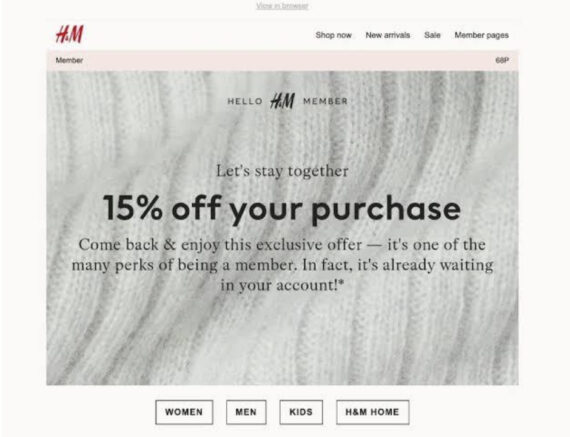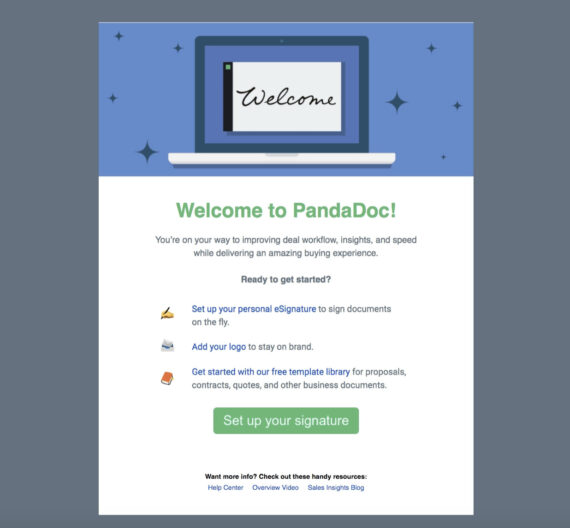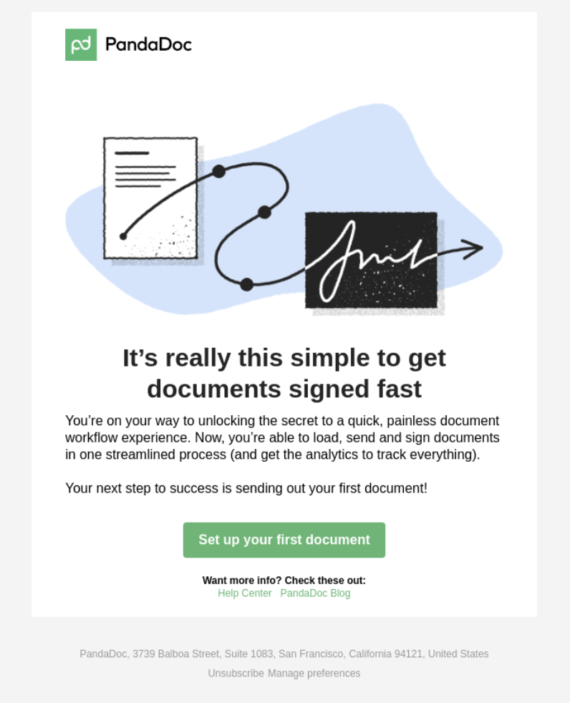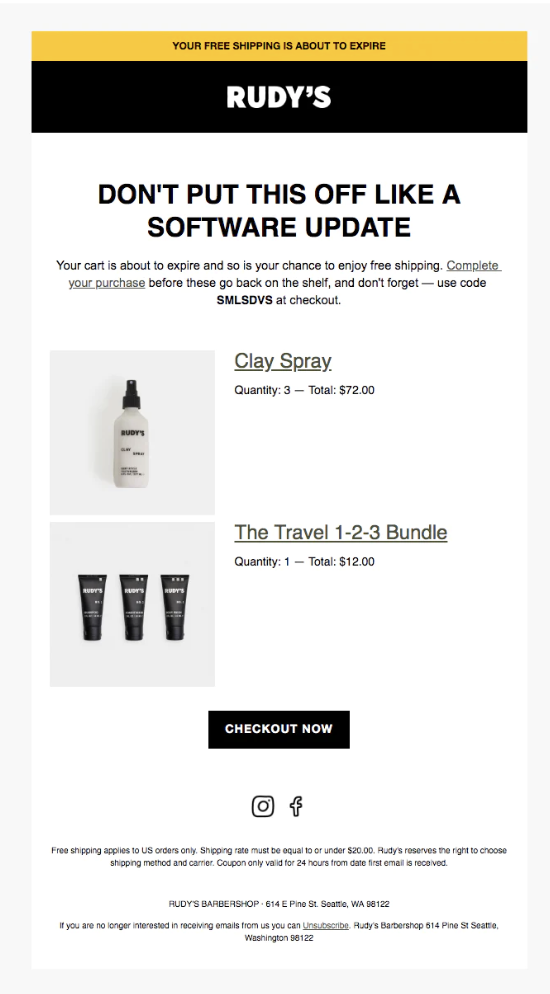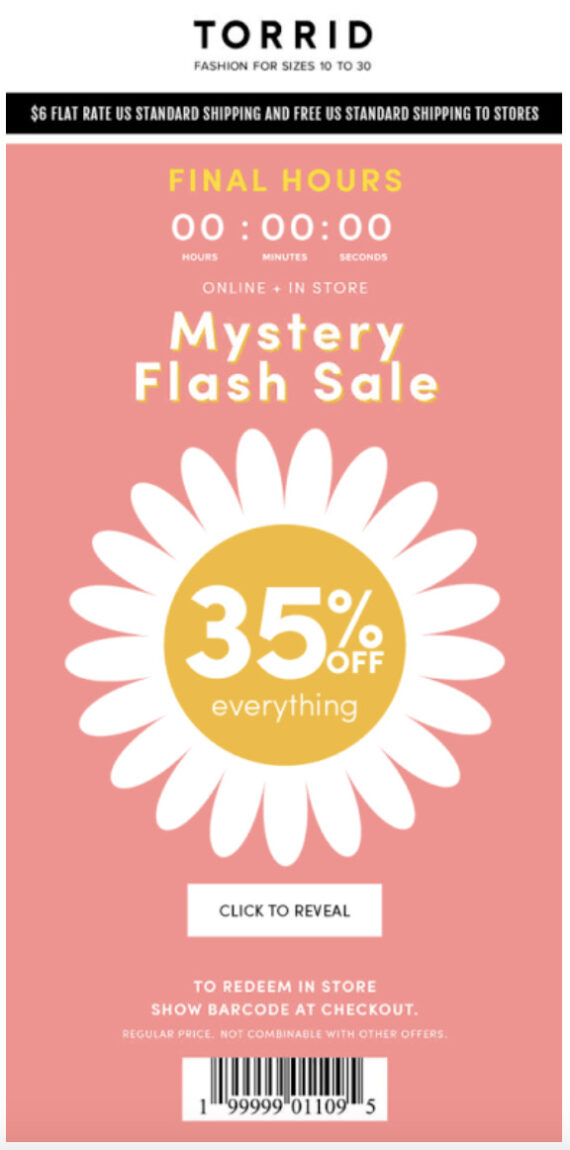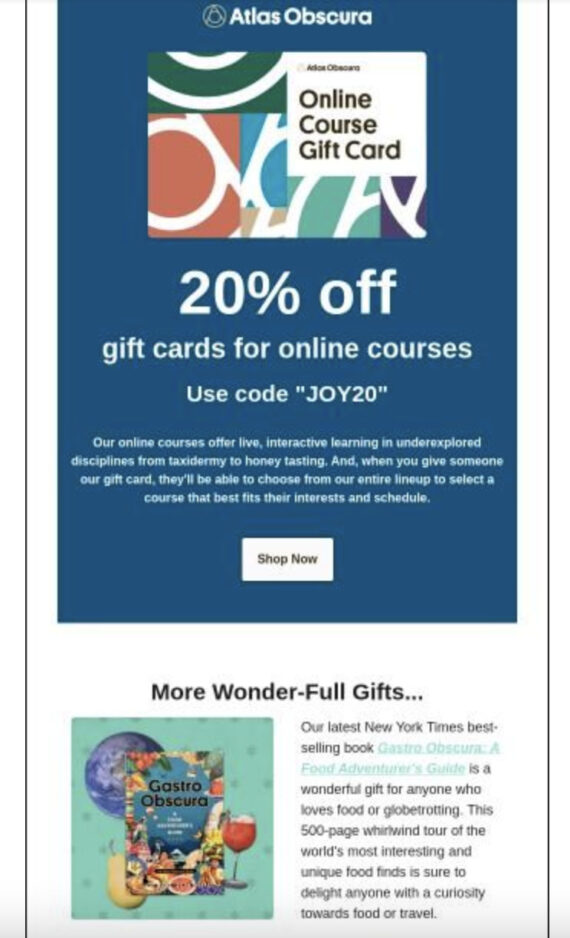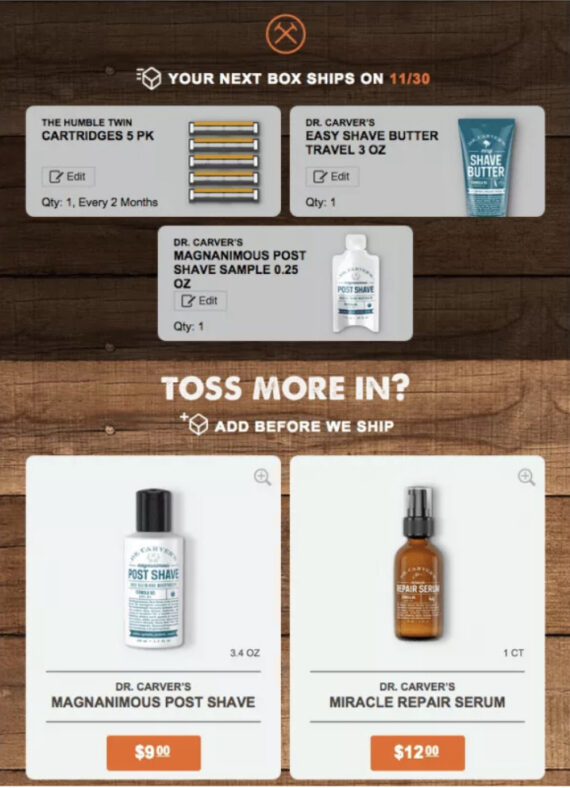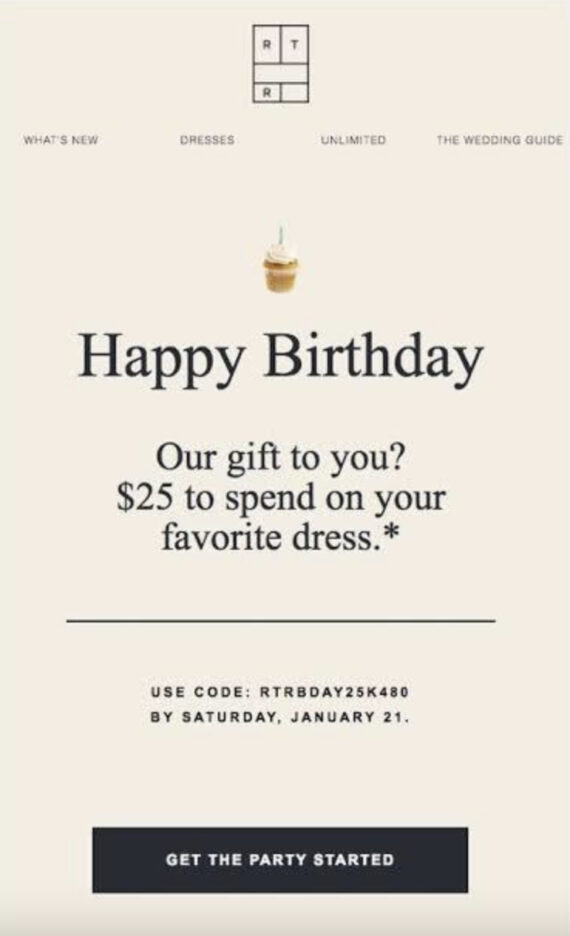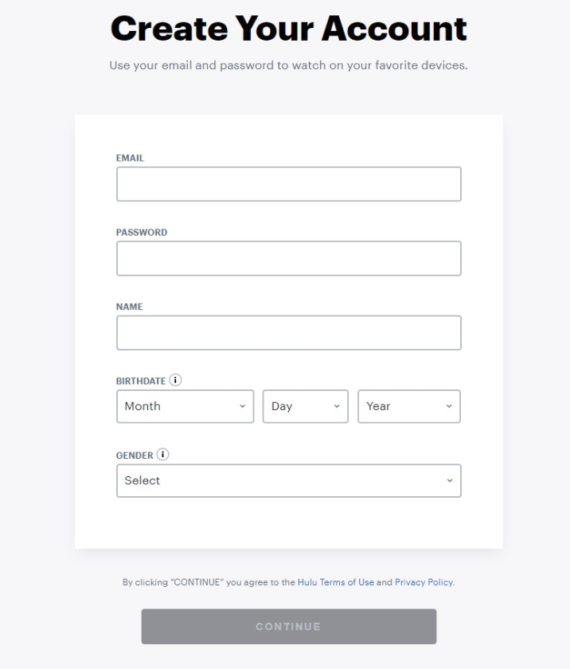Your complete guide to drip email campaigns
Are you sending drip campaigns to your mailing list? Find out why they are important and five example email campaigns you can create
Email drip campaigns are pre-programmed email series sent to subscribers. These emails are triggered by leads in response to specific user actions.
The emails encourage potential customers to move through the sales cycle from the prospecting stage to the conversion stage. As a result, they keep potential customers engaged, win their trust, and eventually convince them to patronize the brand.
Meanwhile, some drip campaigns encourage existing customers to spend more. This can be through upsells and cross-sells, for example.
Therefore, drip campaigns can be instrumental in engaging with prospects and boosting your revenue.
This article will examine the fundamentals of email drip campaigns. We’ll look at how to create an effective drip campaign and incorporate it into your existing email marketing campaigns.
Let’s get right into it!
Why are drip campaigns so important?
Email drip campaigns have lots of advantages if used appropriately. For one, they help you nurture the leads generated through your marketing efforts. Drip campaign emails enable you to contact potential customers more effectively and efficiently.
Moreover, since the series of emails is trigged by user activities, they tend to be more personalized. Just one of the main things to take care of is to use only valid email addresses, which can only be obtained with a quality email finder tool. This will help you get better results.
For instance, if a consumer buys a product, you can use a drip email campaign to cross-sell a relevant item. The emails will resonate with the customer since they are based on something they’re already interested in.
Moreover, strategies such as personalized messaging, birthday celebrations, and special offers, among others, will help you develop a warm relationship with your valued customers. The best CRM tools allow you to set up these drip campaigns for all your customers.
Drip campaigns also help you engage with customers even when they may have become passive or stopped being responsive. You can send simple re-engagement campaigns like the one below:
Five types of email drip campaigns that work amazingly well
Now, let’s examine some effective email drip campaign examples that work like magic and the steps you can take to implement them successfully.
1) Welcome emails
When individuals visit your website for the first time and sign up for your email newsletter, it’s an excellent opportunity to establish rapport by sending them a welcome email. MailChimp found that delivering a series of welcome emails to new customers resulted in 51% more revenue than issuing a solo email
.Since it’s the first impression, the first email you send is vital. According to a recent study, the average open rate for a welcome email can be as high as 82%. You can send a simple welcome email, as shown in the example below.
This email should provide an introduction that helps prospects use your product or get more familiar with your brand. In addition, if you promised a coupon code, this is where you should send it.
Provide a link to a relevant video, blog post, or helpful resources. For example, a brand like PandaDoc, GetAccept and many more can also give free documents or free proposal templates at this point just to help new users love the platform even more.
The point here is to strengthen the bond with your potential customer by showing that you have something of value to offer.
You can also ask the reader to follow you on social media.
Your final email in this sequence should be able to seal the deal (lead customers further into your sales funnel). Here, you’ll need to emphasize the benefit of your product or services and then close with your call to action. See how PandaDoc does this below:
Your final welcome mail can encourage readers to upgrade their subscriptions, buy a product, or use your services. The entire process needs to happen over a few days, so your brand stays in their minds.
2) Cart-abandonment emails
One factor that plagues many online stores’ is cart abandonment. Shoppers may come to your store and add items to their shopping carts but abandon them before checking out. This can happen for various reasons.
For example, they may feel your website is not secure enough for them to provide their credit card details. It may also be due to an unexpected expense.
Whatever the reason is, cart abandonment can hurt your bottom line. Fortunately, you can encourage the customers to go back to their carts and complete the checkout process through cart-abandonment emails.
In its cart abandonment marketing email, Rudy’s sends a humorous follow-up email with the headline, “Don’t put this off like a software update.”
Rudy’s also provides photographs of the items left in the cart and provides coupon codes in a last-ditch attempt to entice clients to finish their orders. If you introduce an abandoned cart email sequence, you will likely observe an increase in conversion rates.
Make sure to save the customer’s carts. Your email should also provide a direct link to the cart itself. Don’t send the customers back to the homepage. Remember, you want to streamline the checkout and ensure they complete their purchases as quickly as possible.
Another great way to boost the performance of your cart abandonment emails is to provide discounts. Giving your customers free shipping, a coupon code, or other discounts can incentivize them to complete the purchase.
Speaking of which, special discounts and offers emails are other drip campaigns you could introduce.
3) Special discounts and offers emails
Drip campaigns that inform readers about special discounts and offers are helpful when you want to improve your sales. Typically, these campaigns maximize psychological selling triggers such as the desire for good deals and the fear of missing out (FOMO) to compel clients to make a quick decision.
A first special deal drip email campaign might address customers’ demands, while the second can emphasize why your deal is the best price available at the time. The aim is to entice customers to take advantage of the offer.
Here’s a great example from the womenswear eCommerce site Torrid:
Special offer drip campaigns can also help you improve the sales of specific products or services. However, your campaigns should not be too promotional. Instead, the email content should focus on the value that your customers will get from these offers.
For example, if you sell online courses such as inbound marketing or general digital marketing courses, don’t focus too much on telling the recipients about the discount itself. Instead, reinforce what the recipients are going to get from the online course.
That’s what this email does.
The brand also uses this email to cross-sell other relevant items. We’ll talk about cross-selling emails in the next section.
It’s advisable to make the offers time-limited. For example, the discount could be available for only 48 hours. This helps you leverage FOMO to achieve the best results.
4) Cross-selling emails
Cross-selling emails are used to offer customers a complimentary product or service. They are usually sent after a customer has purchased another item.
These emails are one of the most effective methods for converting first-time purchasers into recurring customers while also increasing your average transaction value and customer lifetime value.
You can start suggesting complementary products in your order confirmation email. Here’s an example from Dollar Shave Club:
You can also send a series of cross-selling emails after the orders have been delivered. This could be in the form of a reminder to stock up (if it’s a product) or to resubscribe (if it’s a software package). But, again, remember to keep it subtle so the emails do not annoy your customers.
If there’s a new product in stock, you can send cross-sell emails to customers who previously bought a related product.
Cross-selling emails are not only useful for eCommerce stores. SaaS companies, online course builders, and other industries can use them too.
5) Birthdays and anniversaries emails
Birthdays and anniversaries are special moments that you can use to foster a positive connection with your customers. These emails will help you show your customers that they matter to you.
It’s a good idea to offer your customers a limited-time promotion or a free product in the birthday email sequence you send. You can also use a promo code like the one shown below:
A birthday promotion requires advanced planning, which includes collecting personal data like birthdates and names. You can simply include these fields in your lead capture form like HULU does in the example below.
However, that’s not always possible because keeping your lead generation forms short is also critical. Therefore, if you can’t capture birthdays in those forms, consider collecting it once the customer has signed up to your email and is familiarized with your brand.
Not every birthday email chain needs to be intricate. It could simply be a stand-alone birthday greeting or a birthday greeting with a limited-time offer. It could be 30% off a product or service, for example. It could also be a free sample if it is a product. Then, follow up with a message reminding them of the offer’s expiration date.
Is it time to create your drip email campaigns?
A drip-email strategy could help your main email marketing initiatives. You can nurture leads and increase sales with a good drip marketing campaign.
There are numerous drip email campaigns to consider. Here are five we recommend:
- Welcome emails
- Cart abandonment emails
- Special discounts or offers
- Cross-selling emails.
- Birthdays and anniversary emails
From this article, you’ve learned how to start running each of those drip campaigns. You can start with the welcome emails and build up from there. You’ll also want to invest in the right email autoresponders to ensure your campaigns are successful. Happy emailing!
Baidhurya Mani is the founder of SellCoursesOnline.com. He regularly shares tips, tools, and strategies to help creators and entrepreneurs build a successful online course business.


